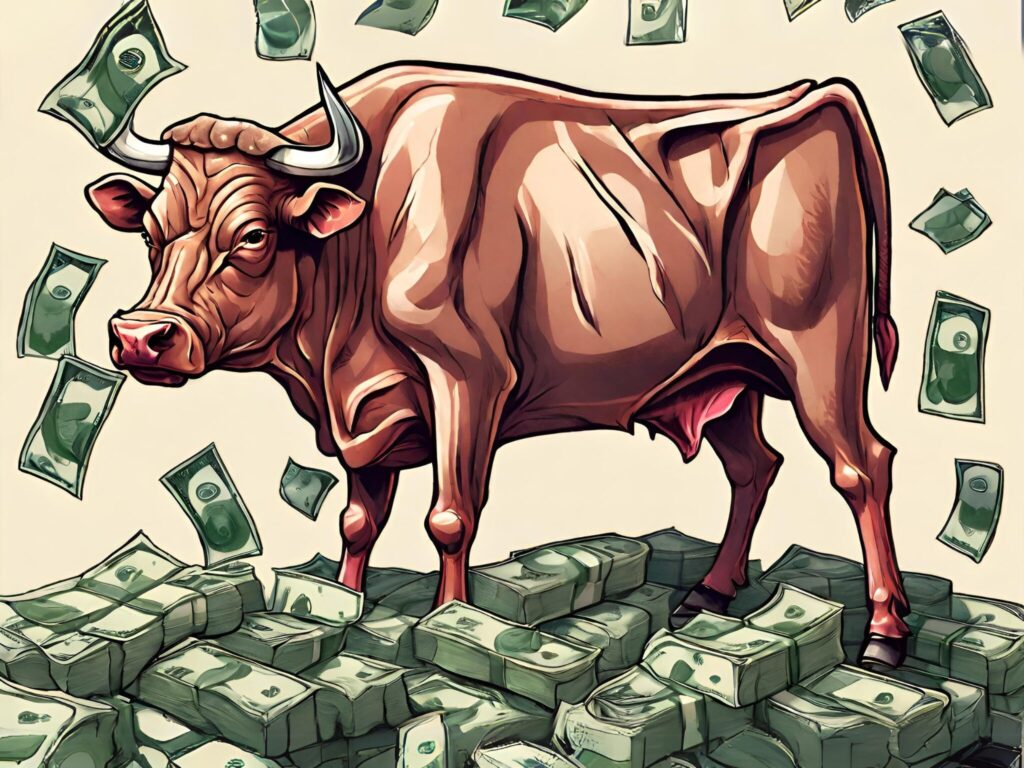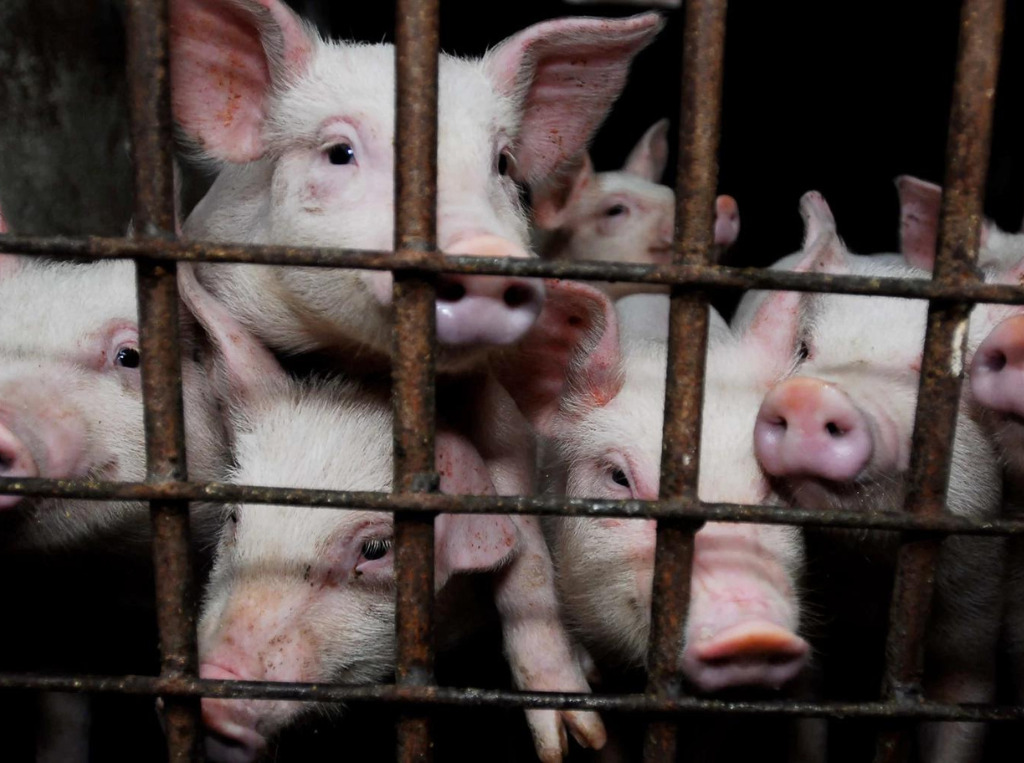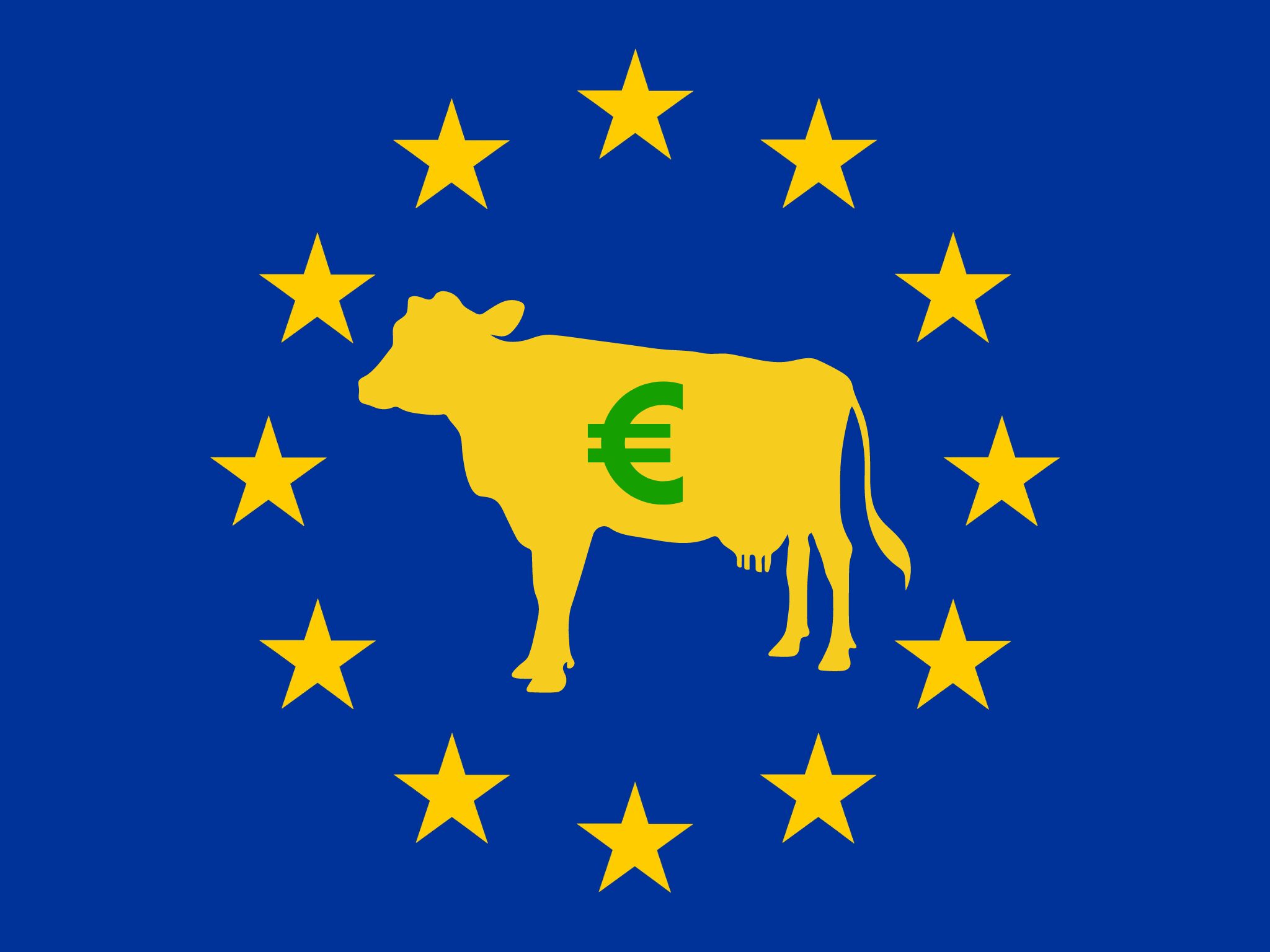82% of EU Subsidies Go to Livestock Farming – Four Times More Than Plant-Based Food
5 Mins Read
A majority of the EU’s farmer subsidies through the Common Agriculture Policy go to animal agriculture, which accounts for 84% of the bloc’s food emissions, undermining its climate goals for 2050.
The EU aims to make Europe the first climate-neutral continent by 2050, but 82% of the public subsidies it provides to farmers under its Common Agriculture Policy (CAP) went to planet-harming animal agriculture, according to a new study published in the Nature Food journal.
In fact, 44% of this funding went to the production of animal feed. This is despite animal products providing only 35% of calories and 65% of proteins in the EU, and contributing to 84% of the bloc’s greenhouse gas emissions from the food system.
The amount of money going into livestock farming is four times as high as the capital invested in plant-based farming, and the report suggests that the EU’s “de facto subsidising of livestock production” may lead to animal-rich diets becoming “artificially cheap” and supporting unsustainable production and consumption patterns. Research has shown that vegan diets can reduce emissions, land use and water pollution by 75% compared to meat-heavy diets.
“We found that the CAP disproportionately supports animal-based products over plant-based alternatives,” said lead author Anniek Kortleve. “It came as a little bit of a surprise. It was a little bit higher than other studies reported before, and this is because of the proper inclusion of feed subsidies.”
‘Distorted’ subsidies reward milk and beef production

The EU spends nearly a third of its budget (about 30%) on CAP subsidies. The study analyses figures from 2013, when the UK was part of the bloc too, and finds that the policy – which pays more to larger farms – facilitates “high-emissions livestock farming” through direct payments, commodity support for livestock products, or explicit support of animal production and consumption.
In 2013, the total CAP budget was €57B ($62B), but only 63% of its subsidies resulted in domestic consumption. While 23% were traded within the EU, 12% of subsidies – especially to high-value commodities like cheese, pork and wine – went to mostly upper-middle- and high-income countries like the US, Russia and China. In fact, the US consumed more of the EU’s farming subsidies than Denmark, and China more than the Netherlands.
In another example of the EU’s “distorted priorities”, subsidies embodied in domestic plant-based product consumption were similar to those in exported animal-based products.
Beef and milk represented the highest amount of overall subsidies in the bloc, and once animal feed was factored in, the proportion of subsidies for beef, milk, mutton and goat meat was doubled. For example, subsidies embodied in a kg of beef increased from €0.71 to €1.42 . For poultry, it went from €0.06 to €0.15, while it tripled from €0.07 to €0.28 for pork.
This results in “perverse outcomes for a food transition”, given that CAP is based primarily on land use, and animal products use more land and are fed crops that could instead feed humans. This is why the researchers say the CAP “presents an economic disincentive” for a shift towards plant-based foods, which occupy much less land. Cow’s milk, for example, requires 11 times more land per litre than oat milk, and beef needs 48 times more land than peas to produce the same amount of protein.
EU watering down green policies

While the analysis focused on figures from 2013, the authors say there wasn’t much change in the distribution of subsidies until 2020 – although some experts dispute that. The proportion of subsidies going to livestock farming is higher than what has been found in other research. One study last year revealed that cattle farmers received at least 50% of their income directly through EU subsidies between 2014-20, while another found that about half of this funding went to animal foods.
The authors acknowledge this, noting that some other estimates use OECD figures, which – while more recent – omit data on certain grazing and fodder crops. Instead, they connected subsidy records to an academic database on food flows and tracked the flow of public money through the supply chain in 2013.
Analysis by Greenpeace in 2020 found that animal agriculture accounts for 17% of the EU’s total greenhouse gas emissions. And while there have been some efforts to curb this footprint, most have largely fallen short. “It’s very difficult to meet those targets if you’re setting up the economics such that you’re incentivising the most damaging products,” said study co-author Paul Behrens.
In its latest CAP reform for 2023-27, the EU earmarked a quarter of direct payments for ‘eco-schemes’, which incentivise environmentally friendly farming. However, its attempts to decarbonise are being increasingly thwarted by a host of policy interventions, leaving its climate-neutral goal in limbo.
Only last week, eight countries withdrew their support for the proposed nature restoration laws, a key initiative of the EU’s Green Deal that was designed to reverse years of damage to wildlife. Around the same time, EU member states agreed on a proposal to weaken and delay some of the environmental requirements farmers must meet to receive subsidies and reduce the number of farms covered by rules to cut livestock pollution and emissions.
And last year, an investigation revealed that industrial farming lobby groups have deep ties with certain MEPs, who have been working together to form alliances to resist Green Deal legislations and stall Farm to Fork reforms, including a restriction on pesticide use and – as has now become apparent – the nature restoration laws.
A separate investigation found that the pushback from lobbying groups also led to a delay in the EU’s promised ban on caged farming, which has now been put on hold indefinitely. The EU Commission is now facing legal action for its failure to uphold this commitment.



